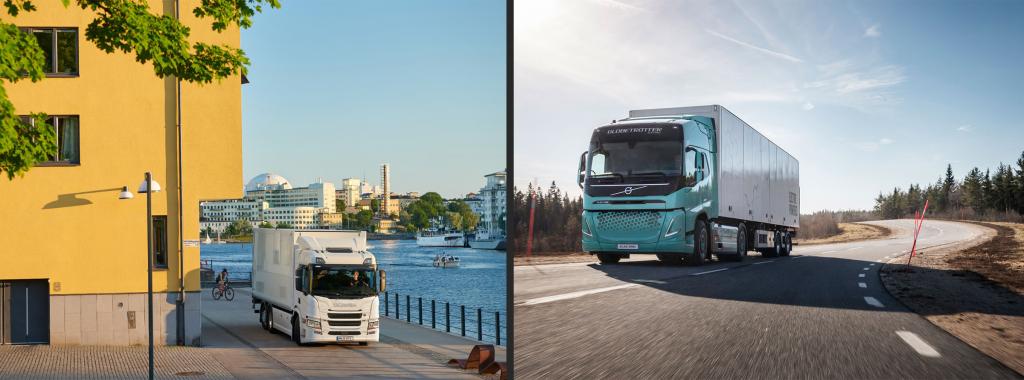Page
System demonstrators: To test innovation in a real environment
How do we test new and exciting innovations in reality without creating chaos and risks? How do we know how they work if it is not even legal to test them? System demonstrators make the impossible possible. Being able to test what is not yet within the regulations in a real environment - a type of controlled reality - opens up opportunities to develop new processes, systems and innovations for a sustainable future.
Imagine that we have a big problem and need to solve it. We have a perfect technical solution or a new process for how to use it. But we do not know if it works in its context, and we can not let it go in reality. What does it take for us to know that?
In order to be able to change entire systems, we need to be able to experiment and test in a controlled reality.
- Then we use the tool system demonstrator, says Andreas Netz, head of department at Vinnova and responsible for developing the concept system demonstrator. During the global event Sweden innovation days, he will give an exciting presentation on January 19 about system demonstrators and the system change that is happening now.
 | - A system demonstrator is a controlled way to test a sustainable system change with a mix of innovative solutions in a real environment - and with regard to the context in which it will operate. To achieve the sustainability goals, we need to change several social systems, Andreas explains. There are lots of innovative solutions, but we need to test the conversion of entire systems. |
What does it mean?
When we introduce change and innovation, many different processes are affected in our everyday lives. How can we know in advance what will happen on all fronts when we introduce new ways or technologies?
- We do not know. Therefore, we need to test with everyone's angles. Working with system demonstrators is a way to understand what needs to change in society to achieve change and thus find the path to change. Not until we can take into account all the required aspects can we solve a problem.
But how?
Andreas takes the Reel project with electric transportation as an example - where the state and industry are now making a major joint effort.
Reel is a system demonstrator where 40 battery-electric trucks will roll through almost all of Sweden. The test includes quantities of actors, charging point operators, hauliers, energy and electricity network companies, truck manufacturers, transport buyers and public actors.
The tricky thing is that you can not test this giant system in a lab to see what is needed in regulations, user behavior or technology. It must be done in a real environment. And to do that, current infrastructure and business models need to change. And without testing in a real environment, we can not see what happens when we introduce innovation. It will be a mission impossible.
It is the interplay between the solution and reality that is the key. Technical innovation is not enough.
This is where the system demonstrator tool comes in. The controlled part of reality allows testing and becomes a system demonstrator - an attempt that can be found in people's everyday lives on the right roads with real drivers, suppliers, staff, even though it is not yet fully covered by the regulations.
- When we create system demonstrators, we can see what is really happening, says Andreas. Then we can understand which behaviors, actors or regulations need to be changed in order for the intended solution to be introduced. It is the interplay between the solution and reality that is the key. Technical innovation is not enough. We need to understand the context around.

- This is a clear example of innovation in a broad sense, where companies, authorities and others together address that even business models, behaviors and regulations need to be developed towards sustainability, says Vinnova's director general Darja Isaksson about the state's and industry's effort on Reel, among others. (image source Scania Sverige (left image) and Volvo Trucks (right image).
The system demonstrator becomes a way that allows us to get from where we are today to the goal.
A system demonstrator can thus be a physical place and function but also a process. It can be about policy obstacles and regulations, logistics, people's travel habits, business models or technical solutions. The important thing is that it is done from a clear system perspective where all aspects are included, including user behavior, business models, regulations and infrastructure.
- It will be a way that allows us to get from where we are today to the goal. We get to know what needs to change before innovation can come in handy. And while the test is ongoing, we can continue the development of technology, business models and infrastructure.
System change happening now
At the moment, trials are underway in many areas about how we get the entire system to change in order for society to function more sustainably. We talk about smart policy development as a method of adapting regulations to sustainable solutions. The concept of mission and mission-oriented approach is highlighted in contexts where many parties need to contribute to sustainable societal change based on common objective - so-called missions.
In order to be able to change entire systems, we therefore need to be able to test in a controlled reality. Projekten Gatan, the system mapping of school food and the electric self-driving buses in Kista and Barkarby are more examples where actors from different areas and sectors participate to find direction and objective for system change.
Sweden as a global test arena
- I like the analogy with Sweden as a permanent world exhibition, says Andreas. If we can offer a number of models for tests and demons with international luminosity, which attract both competence and capital to Sweden as a field of work. Be a center for research and testing via system demonstrators. It would inspire collaborations where actors from different countries come together around one or more system demonstrators.
We may not have all the solutions. But we can provide the tools and working methods in Sweden thanks to the fact that we have a high level of technology - and not least a good basis for collaboration and trust.
Five dimensions for durable |
Questions?
Last updated 27 June 2022

